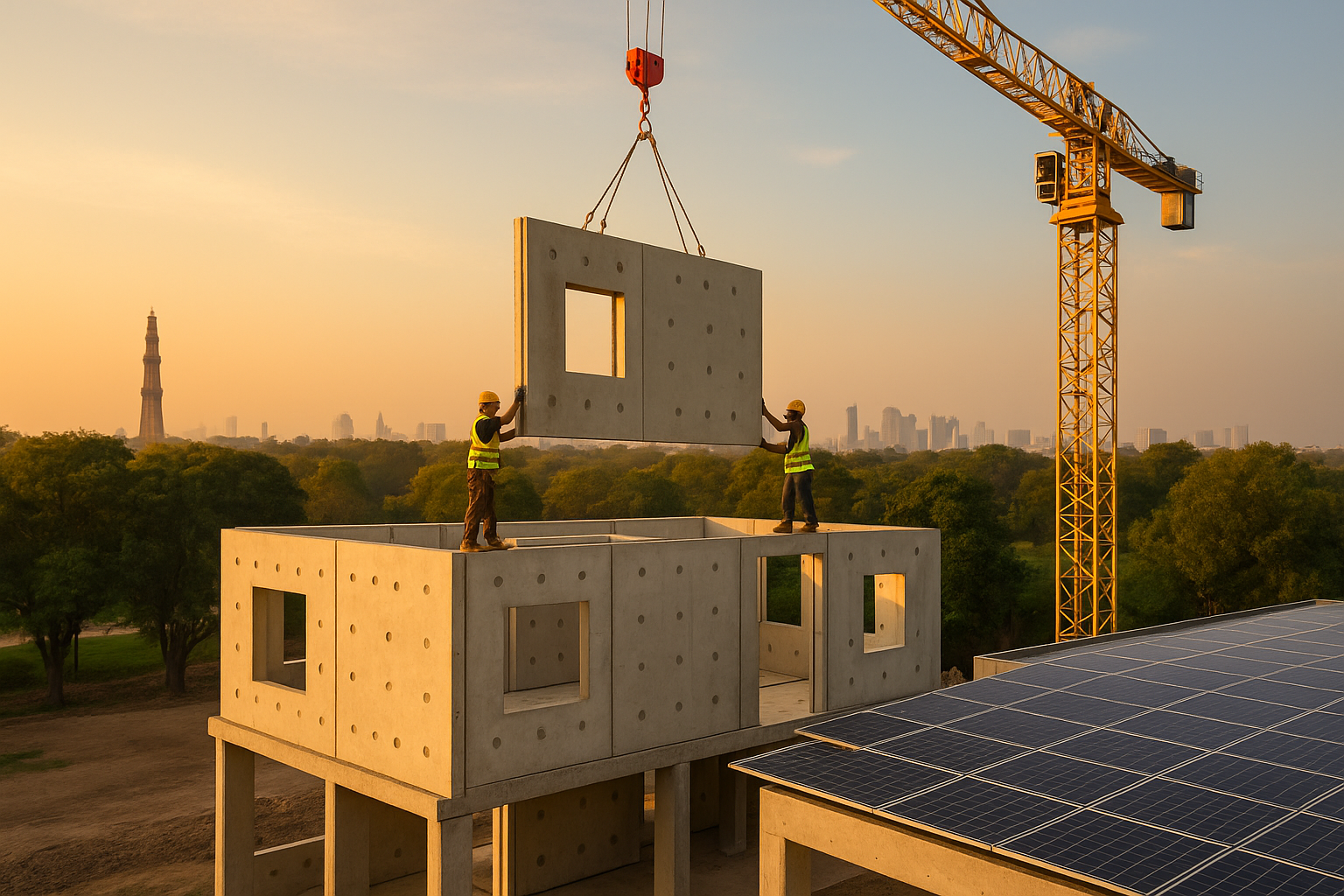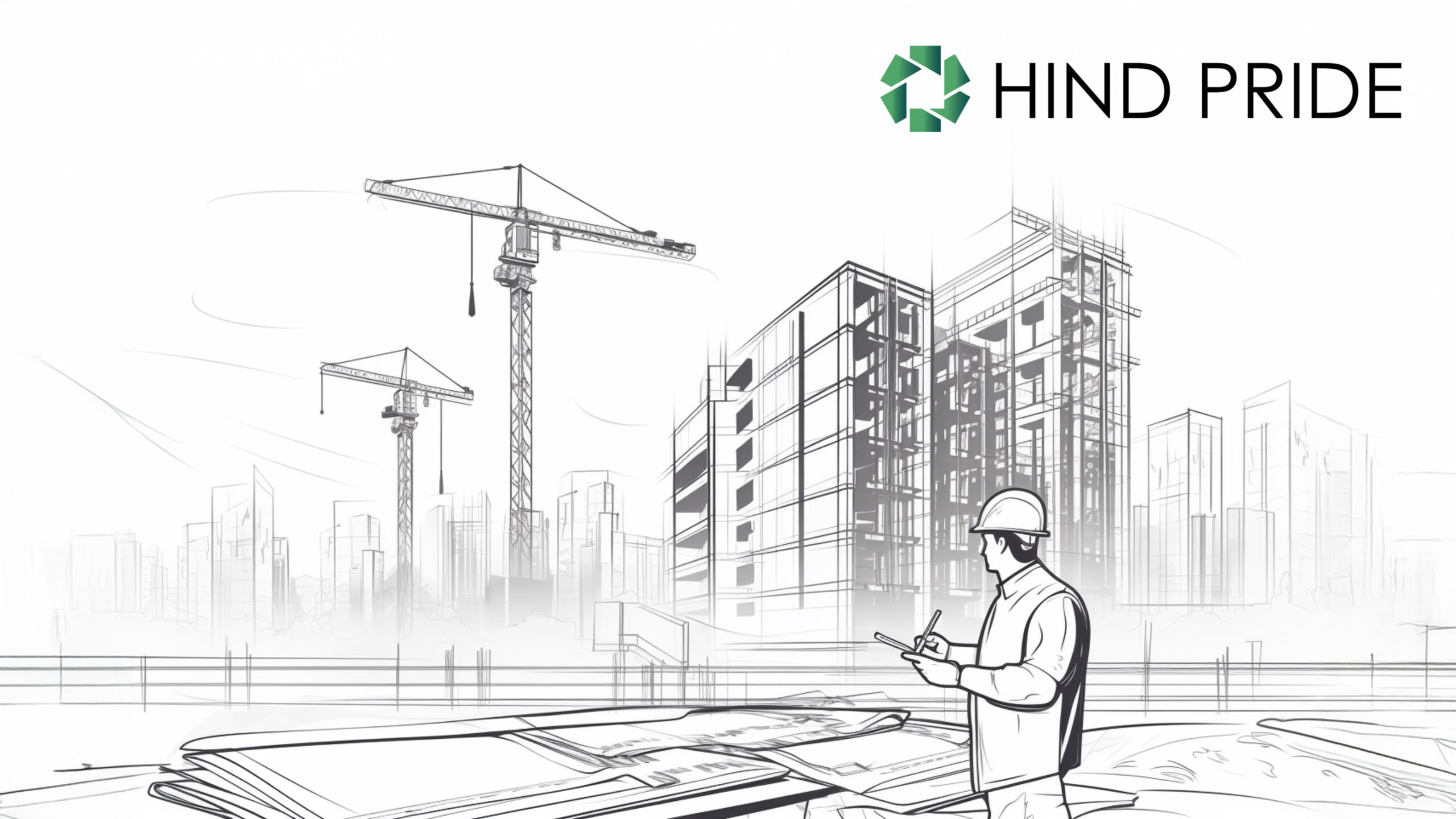

Table of Contents
ToggleIf you’re searching for an affordable construction company in NCR, you’re not asking for the cheapest brochure—you’re asking for a builder who can prove, on paper, that every rupee, inspection, and joint detail is accounted for. In Delhi-NCR’s seismic Zone IV, “affordable” doesn’t mean cutting structural corners or gambling with timelines. It means copying the discipline India’s biggest client (the Government) already uses—CPWD-style SoR/BoQ line items, milestone-based payments, documented variations—and pairing it with factory-made RCC (precast) panels and an ECBC-aware envelope. This guide gives you the entire system, ready to paste into your tender and hold any bidder accountable.
An affordable construction company in NCR should deliver two things better than anyone else: clarity and control.
Clarity: Every scope line is measurable (length, area, volume), billed against a Schedule of Rates (SoR), and tied to a specific inspection checklist.
Control: You release money only when a milestone passes inspection. If a change appears, it rides a variation method you already agreed on.
This is exactly how public works keep complex projects honest. You can mirror it for a farmhouse, villa, or mixed-use site and keep both cost and quality in check.
Authoritative playbooks you can cite (save these):
CPWD e-Publishing / Department Manual (BoQ/tender discipline)
IS 1893 (Part 1):2016 (seismic design loads)
Low quotes hide in vague headings. Affordable builds emerge from specificity:
Translate your vision into auditable buckets
1) Civil & Structure (RCC — panelized)
Panel casting (grade, thickness, rebar schedule, cover, curing regime, cube tests).
Panel transport (km), cranage (tonnage/hour), laydown/storage provisions.
Erection & joint treatment (grout type, dowels, shear keys, sealants).
QA artifacts: compressive strength logs, cover meter reports, dimensional tolerances, joint-inspection photos.
2) Foundations & Geotech
Excavation classes; PCC/RCC volumes; blinding; backfill and compaction tests.
Soil investigations (IS 2720 family), SBC assumptions, foundation type mapping.
Dewatering & surface drainage design (peri-urban plots flood if this is weak).
NDMA slope/flood guidance (peri-urban resilience)
3) Envelope & Openings
Wall/roof U-values; insulation thickness; vapor control.
Window/door specs (frame, SHGC, U-value), insect screens, safe hardware.
Shading (overhang ratios, fins, pergolas) and bridge-free details.
4) MEP (Plumbing, Electrical, HVAC)
Plumbing fixture counts, filtration/softening, pump heads.
Electrical points, DBs, earthing, surge protection, lighting watt plans.
HVAC tonnage right-sized by an ECBC envelope; ceiling fan + ventilation strategy.
5) Water Systems
Rainwater harvesting (tank size, first flush, recharge pits).
Greywater lines to landscape drip zones.
6) Siteworks
Internal roads/paving, fencing/gates, storm drains/soakaways, septic/STS, native landscaping.
7) Provisional Sums & Contingencies
Decks, pergolas, outdoor kitchens, landscape upgrades—capped and method-priced only.
With this structure, every bidder must price the same measurable outputs. That’s how an affordable construction company in NCR keeps your money where it matters.

Tie payouts to evidence, not promises:
Factory Release (Panels QA Passed) → % payout with cube tests, cover logs, tolerance reports.
Site Arrival & Storage → % payout after damage check, stacking plan, weather protection.
Erection Complete + Joint Inspection → % payout after photos & checklists.
Envelope Closed & MEP Rough-in → % payout with pressure tests, insulation checks, earthing IR.
Commissioning & Documentation (O&M, warranties, as-builts) → retention release.
Reference: CPWD Works Manual – payments/inspection gates:
Changes happen. The difference between chaos and control is the method you lock before starting:
Method of Measurement (what counts and how it’s verified).
Rate Derivation (SoR base + market delta + OH&P).
Paper Trail (dated sketch, photo, site instruction, approval).
An affordable construction company in NCR that masters IS 15916 wins in four quiet ways:
Parallel schedule: panels cure in the factory while foundations run on site → weeks saved.
Factory QA: dimensional precision & controlled curing cut rework.
Cleaner sites: fewer wet trades, fewer deliveries, less neighbor disruption.
Design for resilience: joints and replacements are planned; future repairs cost less.
Repairs after even moderate tremors are the opposite of affordable. Delhi-NCR is Zone IV—treat it seriously:
IS 1893 governs the lateral loads you must prove in drawings.
Delhi Microzonation highlights local amplification pockets you should respect.
A house that rides out shocks with minor fixes is the truest form of affordability.
Affordability is also monthly bills. Insist on an ECBC-aware envelope and plan for solar from day one:
U-values & SHGC that cut cooling loads; shading designed (not improvised).
Cross-ventilation + ceiling fans for shoulder seasons.
Solar-ready roof: dead-load allowance, penetration detail, isolators, cable tray paths → faster PV installs.
RWH + greywater: trims potable demand by 20–30% when sized and executed properly.
IAQ plan: dust control during works, low-VOC finishes, and filtration are essential in Delhi air episodes.
Drainage & slopes: NDMA guidance on retaining, runoff, and flood-safe siting protects your site—and neighbor relations.
An affordable construction company in NCR thinks about lifetime affordability, not just day-one cost.
Two identical drawings can cost wildly different amounts if logistics and supply are weak:
Route surveys for trailers, cranage windows booked early, permits locked.
Multi-state vendor bench for steel, cement, panels, glazing = price stability.
Track infra signals (rail/road CAPEX) to time deliveries and avoid bottlenecks.
An affordable construction company in NCR manages the calendar as aggressively as the concrete.
Weeks 0–2
Topographical survey; soil tests (IS 2720 selection); seismic concept; ECBC envelope targets.
Solar-ready roof loads; preliminary SoR-style BoQ for bids.
Weeks 3–6
Foundations at site; panels in factory (QA underway).
Lock glazing specs; confirm long-lead MEP & switchgear.
Weeks 7–9
Panel deliveries; cranage; assembly; envelope closes early.
MEP rough-ins; pressure tests; interiors start sooner—and cleaner.
Weeks 10–12
Commissioning (electrical IR, plumbing pressure, HVAC tests).
Snagging; O&M binder, warranties, as-builts; retention tied to performance checks.
This is how an affordable construction company in NCR takes luck out of the schedule.
A. Structure (Panelized RCC)
Panel casting M30, 120 mm; Rebar Fe500D; curing logs; cube tests (7/28 days).
Transport 200 km; cranage 50T × 12 hrs; laydown yard prep.
Erection 350 m²; joint grouting (non-shrink), dowels, sealants; QA checklist sign-off.
B. Foundations & Drainage
Excavation 250 m³; PCC 1:3:6 (10 m³); RCC M25 (footings/columns).
Backfill 180 m³; compaction tests (FD/PD).
French drains 60 m; silt traps; soakaway/outfall.
C. Envelope & Openings
Roof build-up (insulated), U≤0.45 W/m²K; wall U≤0.65 W/m²K.
Windows UPVC/Alu; double glazing SHGC ≤0.32; insect screens.
External shading fins 24 lm; pergola 18 m².
D. MEP
Plumbing fixtures; pumps; water softener; UV filter.
Electrical points 120; DBs (TPN + SPN); earthing ≤1 Ω; surge protection.
HVAC 3.5 TR total (post-ECBC); ceiling fans 8 units; fresh air 0.35 ACH.
E. Water Systems
RWH tank 10,000 L; first-flush; 2 recharge pits.
Greywater line to drip zones; native planting 500 m².
F. Siteworks
Paving 120 m²; fencing 95 m; gate 10 ft; storm drains 70 m.
G. Provisional Sums
Landscape upgrade; outdoor kitchen; lighting accents (capped at ₹X; method-priced).
With this in your tender, bids become comparable. That’s the core of affordability.
Quote A (Lump-sum): “Structure ₹X; Interiors ₹Y; MEP ₹Z.” Looks smaller—but hides cranage, joint treatment, QA tests, and variation method.
Quote B (SoR-style): Splits panel casting, transport, cranage, erection, joint treatment, QA; lists glazing SHGC; includes RWH details; shows variation method and milestones.
Result: Quote B may look 6–10% higher upfront—but finishes closer to the number you signed. Quote A often blooms 15–25% by handover. An affordable construction company in NCR always bids like Quote B.
1) What makes an affordable construction company in NCR actually “affordable”?
Specific, auditable scope (SoR/BoQ), milestone-based payments, and a variation method—plus modular RCC to cut rework/time.
2) Is CPWD SoR/BoQ “only for govt”?
No. The discipline works brilliantly for private homes and farmhouses: apples-to-apples bids, fewer surprises.
3) Does modular RCC cost more?
Total cost typically drops once you count schedule compression, reduced rework, and cleaner handovers.
4) We’re in Zone IV. How critical is seismic detailing?
Non-negotiable. It prevents high repair bills later; demand joint details and microzonation awareness.
5) Which soil tests matter?
A targeted IS 2720 matrix (moisture, Atterberg, Proctor/FD, SBC) tied to foundation type and drainage design.
6) How do I keep variations fair?
Pre-agree Method of Measurement and Rate Derivation; insist on a dated, photographic paper trail.
7) What cuts my energy bills fastest?
ECBC envelope (U-values/SHGC), shading, and right-sized HVAC—plus a solar-ready roof to simplify PV later.
8) How do water & IAQ fit affordability?
RWH/greywater cut potable use; dust control + low-VOC + filtration reduce rework and health complaints.
9) What timeline is realistic?
Common modular arc: weeks 0–2 (surveys/design), 3–6 (foundations + factory), 7–9 (assembly), 10–12 (commissioning).
10) What 3 documents should I demand first?
A SoR-style BoQ, a Zone-IV joint sheet, and a solar-ready roof note—tailored to your plot.
Upload your plot details and we’ll return a SOR-style BOQ, Zone-IV detailing checklist, and a solar-ready roof sketch—so you can compare bids like a pro.
See My Plan (Free, 48 Hours)
Mail us at – design@hindpride.com | Call us at – +91 909-909-5581
Vist and Explore hindpride – www.hindpride.com


